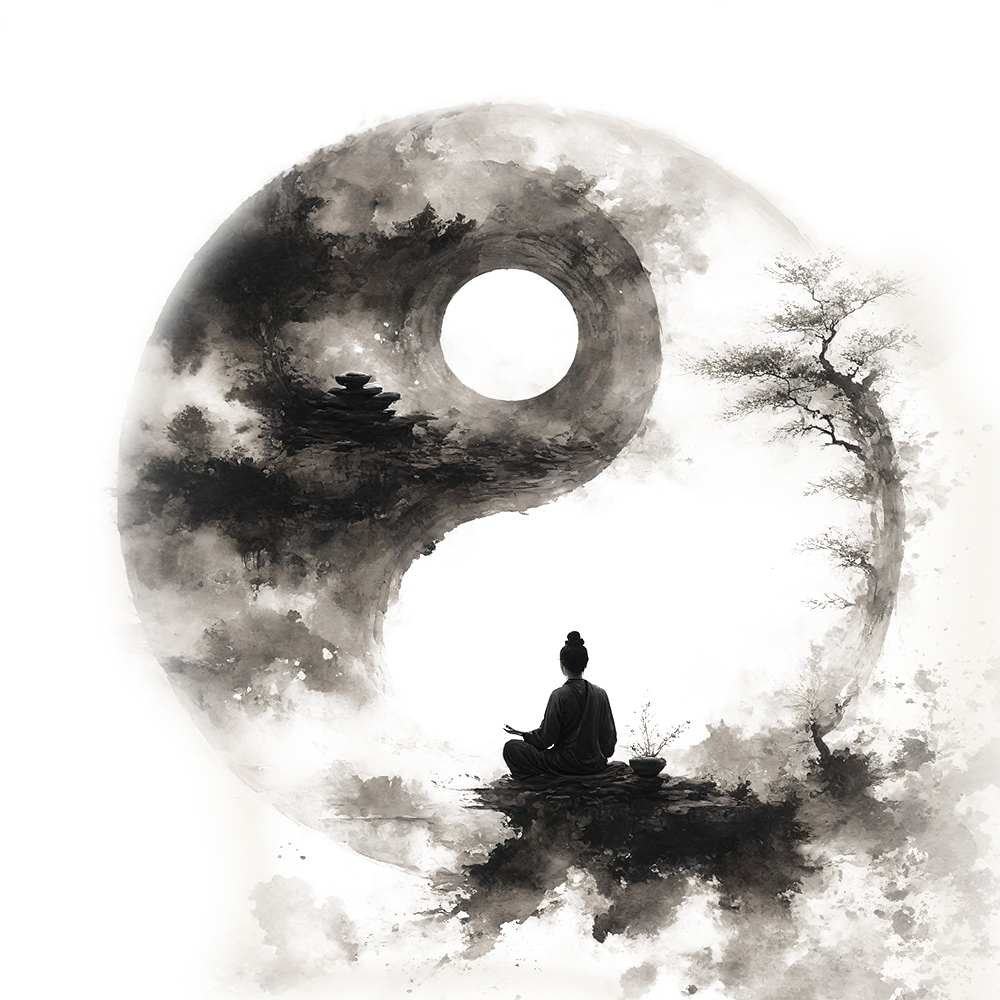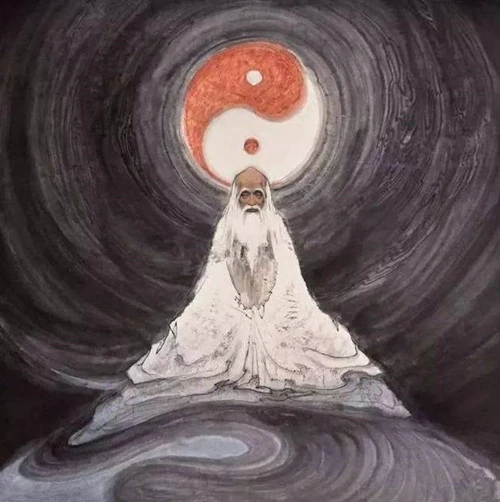Taoism is one of the ideological schools among the Hundred Schools of Thought in ancient China and also one of the Nine Schools and Ten Schools. During the Spring and Autumn and Warring States periods, it was represented by Laozi, Lie Yukou, and Zhuangzi.

After the establishment of the Western Han Dynasty, leaders such as Emperor Gaozu, Emperor Hui, and Empress Lü, as well as ministers like Zhang Liang, Xiao He, Cao Can, and Chen Ping, once governed the country with the Huang-Lao ideology related to but not exactly the same as Taoism. They reduced corvée labor and taxes, allowing the people to recuperate from the harsh rule of the Qin Dynasty. Emperors Wen and Jing of the Han Dynasty carried the Huang-Lao governance technique advocated by the ancient Taoist school to its extreme, a period known as the Reign of Wen and Jing. “The money in the capital piled up to millions, so much so that the strings used to string coins together rotted away and could not be counted. The grain in the Grand Granary was heaped up year after year, overflowing and lying outside, until it rotted and became inedible.” [1] The country was wealthy, and the people lived in peace and happiness.
Subsequently, Dong Zhongshu, a Confucian scholar, proposed the policy of “solely venerating Confucianism” to Emperor Wu of the Han Dynasty, which was adopted by later emperors. Taoism became a non – mainstream ideology. Later, during the Wei, Jin, Southern and Northern Dynasties, Buddhism was introduced from the Western Regions. Many Tang emperors believed in Buddhism and combined the doctrines of Confucianism, Taoism, and Buddhism into “Confucianism, Buddhism, and Taoism,” further reducing the status of Taoism. After the Song Dynasty, the rise of Cheng – Zhu Neo – Confucianism and Lu – Wang School of Mind led to the old Taoist thoughts being mixed into Neo – Confucianism, and the independent old Taoist thoughts basically ceased to exist.
Although Taoist thought was not officially adopted, it still played an important role in the development of ancient Chinese thought. Both the Metaphysics of the Wei and Jin Dynasties and the Neo – Confucianism of the Song and Ming Dynasties were developed by integrating Taoist thoughts. After Buddhism was introduced into China, it was also influenced by Taoism. Chinese Zen Buddhism was influenced by Laozi and Zhuangzi’s thoughts in many aspects.
In 1948, Feng Youlan, a great Chinese philosopher and a scholar of New Confucianism, put forward the concept of “New Taoism” (contemporary New Taoism, also known as modern New Taoism) in his book A Short History of Chinese Philosophy [2][3].
Development and Composition
Generally, Laozi is regarded as the verifiable ancestor of Taoism. Through the development of Zhuangzi, Lie Yukou, Yang Zhu, and others, it became a classic. Legalism, the School of Names, and the School of Diplomacy were also influenced by Taoism.
It is said that Yi Yin assisted Shang Tang and Lü Shang assisted King Wu of the Zhou Dynasty, advocating for the people to rest and recuperate, which had a bit of a Taoist flavor. [Source requested] During the Warring States period, the scholars of the Zi Si – Mencius school advocated the theory of the Five Elements, thus becoming the forerunners of the School of the Five Elements. Zou Yan’s theory of Yin – Yang and the Five Elements merged with the Taoist scholars in the Jixia Academy. They believed that the Yellow Emperor was a ruler who governed with tranquility and was the founder of Taoism. Therefore, he was combined with Laozi, becoming the popular “Huang – Lao Taoism” in the early Han Dynasty. The “Huang – Lao” thought combined the mysterious color of the Yellow Emperor with Laozi’s philosophical wisdom and played an important role in the governance concept of the early Han Dynasty. However, strictly speaking, the “study of Huang – Lao” was more pragmatic in political practice, emphasizing governing by non – interference and lightening the burden of corvée labor and taxes. At the same time, it absorbed certain elements of legalism, so it was closer to a political strategy than pure Taoist philosophy. The legends of the Three Sovereigns and Five Emperors were also created during the Warring States period. Han Feizi, a legalist, also absorbed many ideas from Taoism, advocating “respecting the law rather than the worthy.”
At the end of the Qin Dynasty, the taxation and corvée labor on the people were extremely harsh. During the Western Han Dynasty, Emperor Gaozu, Empress Lü, Emperor Wen, and Empress Dou governed the country with the Huang – Lao technique until Dong Zhongshu and the scholars of the Modern – Text School deviated from Confucianism, and the country solely revered Confucianism, while Taoist thought began to fade and gradually merged into the old Confucian thought, subtly influencing social culture, the thoughts of hermits, and folk beliefs. After the Western Han Dynasty, Confucianism continuously absorbed Taoist concepts such as “the Way of Heaven,” “nature,” and “sage within and king without.” Especially during the Song and Ming Neo – Confucianism period, Zhu Xi’s “Li” had a certain intersection with Taoism’s “Tao” at the metaphysical level. In the Eastern Han Dynasty, Emperor Ming of Han dreamed of a golden man, and Buddhism was introduced. Later, during the Wei and Jin Dynasties, although there was a small revival of the old Taoism, the old Taoism was also influenced by Buddhism and thus became nihilized until it disappeared.
In modern times, New Taoism has emerged. There are occasional theoretical struggles between it and New Confucianism [4], but its influence is not as strong as that of New Confucianism [5]. These struggles have been opposed by some people [6].
Thoughts and Advocacies
Taoism advocates “following nature.” It believes that when laws (there is a difference between “law” and “laws”; “law” is like the laws of physics, while “laws” are man – made) are needed, and when the real “Tao” is forgotten or abandoned, society will emphasize benevolence and righteousness. This means that benevolence and righteousness have become deliberate actions rather than natural ones. [7] Therefore, it does not advocate using laws to govern people. Legalism, on the other hand, advocates using laws to punish people, believing that human nature is inherently bad and that authority and fixed laws should be used to govern the world. Taoist thought often conflicts with legalist thought, but when it came to Han Feizi of the legalist school, he used the sentences from Laozi’s Tao Te Ching to expound legalist thoughts.
Although there are differences in schools within Taoism, its main ideas are interconnected: taking “Tao” as the foundation, being natural and non – interfering.
The core of Laozi’s thought is “Tao.” Laozi once said in his works: “There was something formless yet complete, that existed before heaven and earth. Silent and empty! It stands alone and does not change; it moves through all things without fail. It can be regarded as the mother of the universe. I do not know its name, so I give it the title ‘Tao.'” [8] “If a large state serves a small state, it will gain the small state; if a small state serves a large state, it will gain the large state.” [9] Regarding the large state as the world, the large state serving the small state as a country, and the small state serving the large state as a local area. Taoism is the earliest independent native ideology in China, which is very different from Dong Zhongshu’s idea of “Great Unity under the Spring and Autumn Annals.”
The core of Zhuangzi’s thought is “carefree” and “equality of all things.” He advocated the philosophical thought of “Heaven and Earth and I are born together, and all things and I are one.” Yang Zhu is said to be a disciple of Laozi, but he was very radical, proposing “valuing oneself” and “for oneself.” He advocated “preserving one’s nature and true self, not being burdened by external things.” The chapters of Guanzi in the Jixia Academy during the Warring States period advocated “If you abide by the rules, you will be important; if you don’t, you will be unimportant” and “It takes one year to grow grains, ten years to grow trees, and a hundred years to cultivate people,” reflecting the Taoist philosophical thought of starting from small things and aiming at big goals.
Laozi proposed that “Tao” is the origin of the universe and also the law governing all movements in the universe. This view was supported by all sects of Taoism in later generations and became the most basic and core concept of Taoism. Taoism values life, preserves life, and emphasizes health preservation. It looks down on material possessions and regards the carefree state of the mind and the unity of all things as the highest value.

